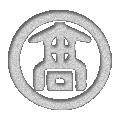FAQs
We know that if you're not a professional gardener, you don't buy tôrô or other stone items on a regular basis. That is why we have created this FAQ page for you. If you have any other questions, please do not hesitate to contact us.
-
What is Tôrô ? What is Sôtô ?
A tôrô is a garden lantern, most commonly found in Japan despite its Buddhist origins. A sôtô is the Japanese version of a pagoda, with multiple stories. Wikipedia, the free online encyclopedia site, has some good introductions with brief explanations. Try this (tôrô), this (pagoda), or this (Japanese garden), for instance.
-
How old is this ?
It depends, of course, but typically our tôrô and other objects were made several decades ago. Do not expect very old tôrôs or sôtôs - they only remain in old temples, shrines or famous gardens and are not available for sale. In other words, we do not deal in artifacts of archaeological or historical value, but only in works of art.
-
Who designed this ? What does quoting mean ?
In general, tôrô and other Japanese stone objects are designed after an existing original or following a certain pattern. However, this does not mean that they are devoid of character or value, as each one is carved by hand by different craftsmen, from different types of stone, and placed in different locations. Once placed on a ground, each object interestingly develops its own character by showing its own way of aging.
In our garden design tradition, using an old stone design is called "honkadori" or quoting, rather than copying, and the old original is called "honka (= original poem). Why poem? Because 'Honkadori' is a special term in Japanese poetry that means "an allusion within a poem to an older poem that would be generally recognized by its potential readers." (wikipedia "honkadori")
-
Who made this ?
All our tôrô and other sculptures are handmade and in most cases created by famous artisans throughout Japan.
-
How much is this ?
It depends. Ask us when you visit our store. Certain types of natural stones have become very rare, and very expensive. Some stones in our collections are considered as priceless and not for sale!
-
Are non-Buddhists allowed to have a tôrô or sôtô ?
Sure. For example, you will find many tôrô in shinto shrines and private gardens in Japan. Today, most people buy or use tôrô or even sôtô only for decoration.
-
Do all your items represent religious images?
No. Some certainly represent Buddhist, Shintoist, or animist images, but the others do not.
-
Who are your customers ?
Our main customers include Buddhist temples, Shinto shrines, professional and amateur gardeners, and Japanese garden enthusiasts from Japan and around the world.
-
Do you provide a guarantee or a written expert opinion ?
No. We will provide you with the necessary information (about the material, the sculptor, etc.) before (and after, if you wish) your purchase and that's it. We run our business with pride and integrity.
-
Is it possible to ship an item outside of Japan?
Legally, there are no regulations that could restrict the export of our items from Japan to other countries. Physically, there are certain shipping companies that specialize in arts and crafts. Please contact us for details.
-
How heavy is it ?
Again, it depends. A Rojimono (buried type lantern) of 90cm height typically weighs about 100-120kg. A yukimi-dôro (movable and legged type lantern) of 75cm height can go up to 200kg. Smaller objects weigh less: a carved stepping stone of 30cm diameter will weigh 10kg or less.
-
Do you accept mail orders ?
No. We would like to sell our stones to those customers who are satisfied with their value after inspection. Why don't you visit us if you have the opportunity to visit Japan!
-
How do you ship the stone ?
We deliver the items within Tokyo and its metropolitan area by ourselves. For other cases, please contact us.
-
How should I take care of my stone after purchase?
Place it where you like and that's it. Let nature do the rest. Do not clean it, especially with chemicals. From our experience, good stone artwork needs less time to show its natural appearance and blend in with its surroundings.
-
How do I set up a tôrô myself?
If you want to set up a tôrô (stone lantern) yourself, or ask your garden designer to do it for you, see this page.
